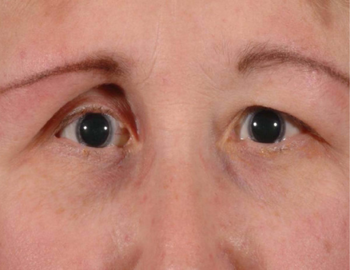Enophthalmos
Jump to navigation
Jump to search
| Enophthalmos | |
|---|---|
 | |
| Image showing right enophthalmos. | |
Enophthalmos is the posterior displacement of the eyeball within the orbit due to changes in the volume of the orbit (bone) relative to its contents (the eyeball and orbital fat), or loss of function of the orbitalis muscle.[1] It should not be confused with its opposite, exophthalmos, which is the anterior displacement of the eye.
It may be a congenital anomaly, or be acquired as a result of trauma (such as in a blowout fracture of the orbit), Horner's syndrome (apparent enophthalmos due to ptosis), Marfan syndrome, Duane's syndrome, silent sinus syndrome or phthisis bulbi.[citation needed]
References
- ↑ Fraunfelder, Frederick T. (2008). Roy and Fraunfelder's Current Ocular Therapy. Elsevier Health Sciences. p. 593. ISBN 978-1416024477. Archived from the original on 22 July 2022. Retrieved 23 November 2017.
Further reading
- Cline RA, Rootman J (1984). "Enophthalmos: a clinical review". Ophthalmology. 91 (3): 229–37. doi:10.1016/s0161-6420(84)34299-3. PMID 6717910.
External links
| Classification | |
|---|---|
| External resources |
Categories:
- Pages with script errors
- Articles with hatnote templates targeting a nonexistent page
- All articles with unsourced statements
- Articles with unsourced statements from June 2022
- Articles with invalid date parameter in template
- Disorders of eyelid, lacrimal system and orbit
- All stub articles
- Medical sign stubs